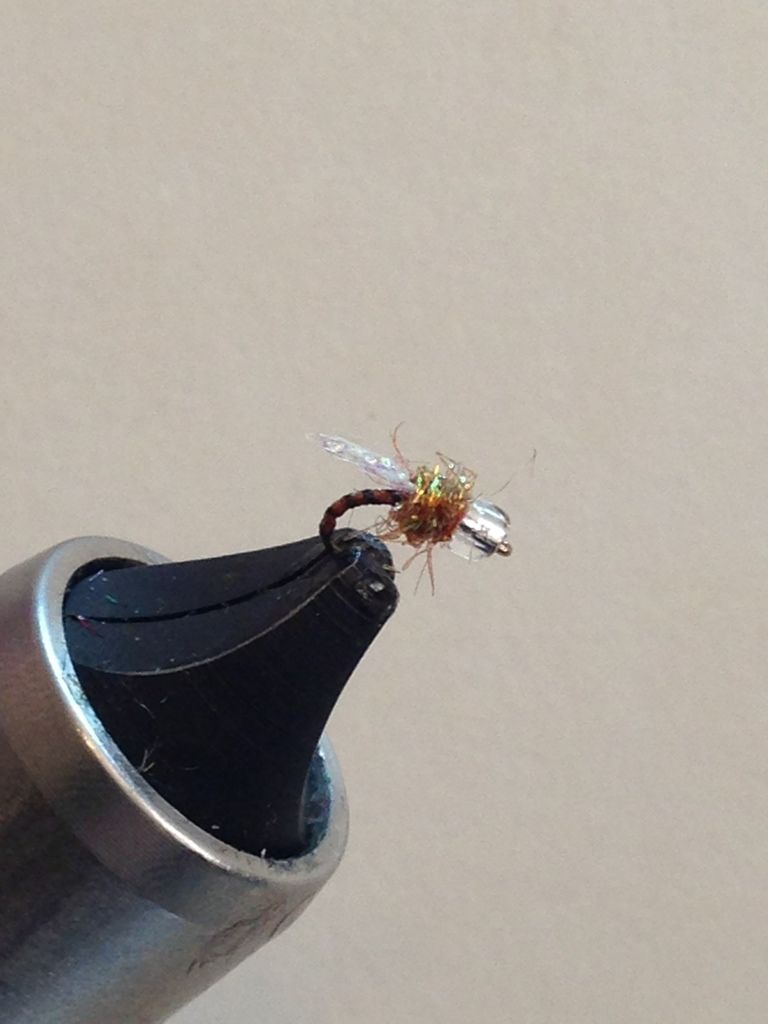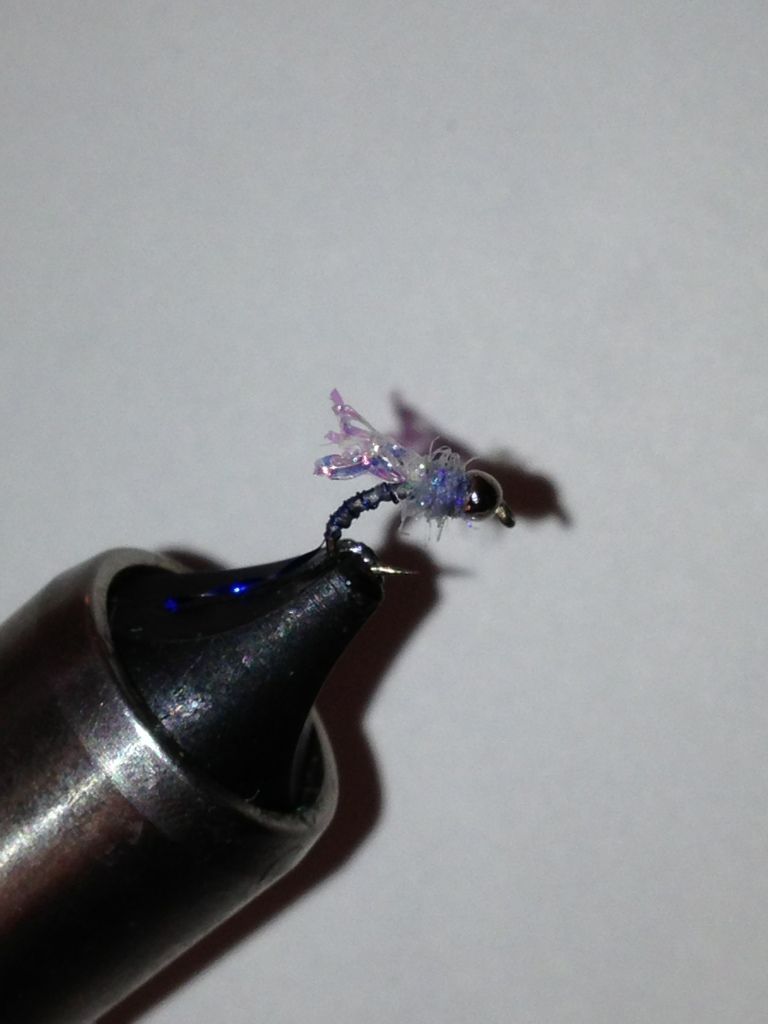spiderninja
Well-known member
Hi,
I was doing some tying yesterday. Although it wasn't terribly productive (fly count wise), I learned something. I learned that some materials and patterns should not be tied on smaller hooks. I was trying to tie this fly on a #22.

Getting the proportions right and avoiding crowding the eye seemed impossible. The combo of CDC and foam, just wasn't working out. I tied a couple on a #18, and it became much less frustrating.
So, I'm curious. Are there any types of flies that you will only tie on a minimum size hook? Also, I have heard that there is some debate about whether the really small hooks are even important for catching fish. Any thoughts?
I was doing some tying yesterday. Although it wasn't terribly productive (fly count wise), I learned something. I learned that some materials and patterns should not be tied on smaller hooks. I was trying to tie this fly on a #22.
Getting the proportions right and avoiding crowding the eye seemed impossible. The combo of CDC and foam, just wasn't working out. I tied a couple on a #18, and it became much less frustrating.
So, I'm curious. Are there any types of flies that you will only tie on a minimum size hook? Also, I have heard that there is some debate about whether the really small hooks are even important for catching fish. Any thoughts?




